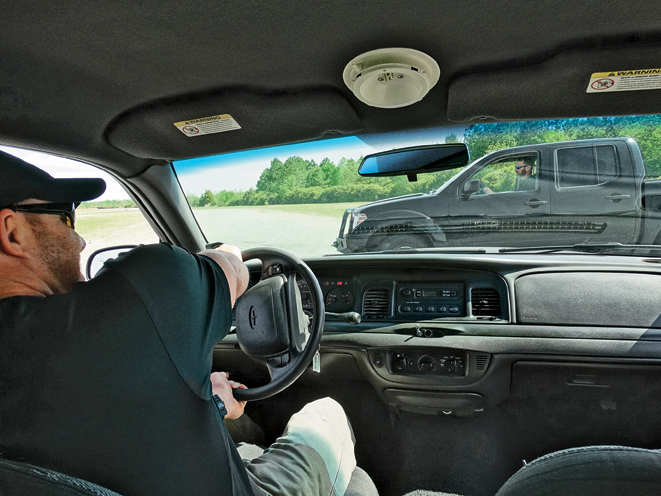1.) Maintain Your Tires: This means having sufficient tread and proper inflation (info found in owner’s manual or on the DOT sticker inside the driver’s door).
2.) Secure Seat Belts: They prevent injury, but you also need a stable platform for optimal car control.
3.) Control Your Eyes: Look where you want to drive, look out further ahead to scan for information and avoid distractions.
Advertisement — Continue Reading Below
4.) Stay Alert: Always know where other vehicles are and where you have space to maneuver. Is there drivable terrain off road if needed to avoid a collision? Check your mirrors—maybe you can stop in time, but what about those behind you?
RELATED STORY: Car Self-Defense – Tips to Prevent, Deter & Overcome
5.) Leave Space For Emergencies: Make sure you always leave enough room to avoid collisions (three seconds is a good rule of thumb), especially when there’s nowhere else to go.
Advertisement — Continue Reading Below
6.) Smooth Steering Inputs: Keep the vehicle as balanced as possible and avoid snapping the wheel. Managing stress in a critical moment is a crucial factor here.
7.) Beware Of Other Drivers: Don’t assume they’ll slow down for intersections, and consider “what if” options in case they don’t yield right of way. Try confirming their travel path before acting when possible.
RELATED STORY: Concealed Carry Travel Tips
Advertisement — Continue Reading Below
8.) Know Your Traction Environment: Bad traction environments often require less speed, less acceleration, braking sooner and minimal steering inputs.
9.) Don’t Drive Compromised: Whether you’re drunk, drowsy, emotionally distraught or extremely angry, all of these can kill your judgment.
10.) Get Driver Training: People who have no idea how to respond are handicapped from the start.
Advertisement — Continue Reading Below
























